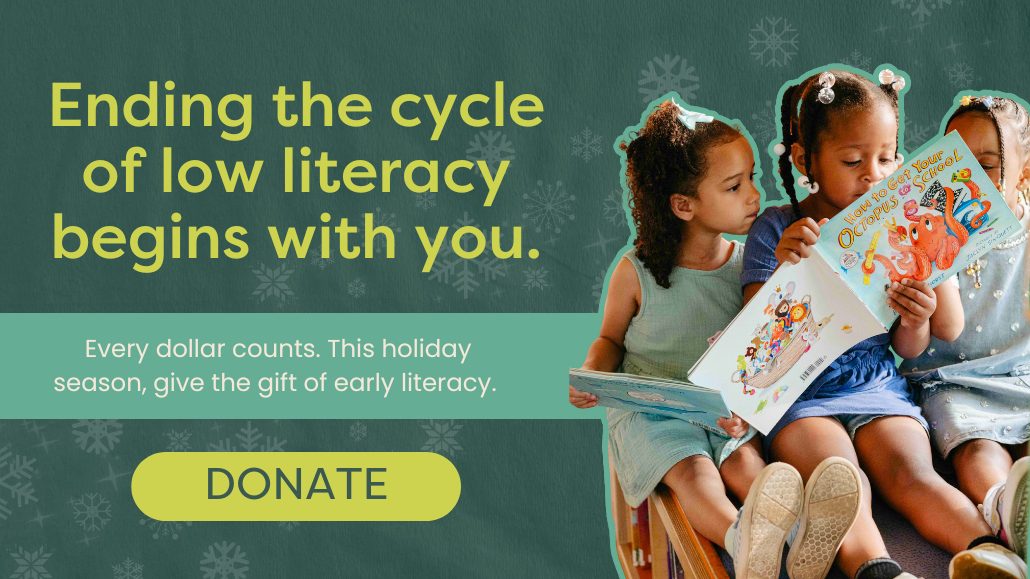Read Across America Day & Closing the 30 Million Word Gap
 Have you ever stopped and thought about how often you speak with your child throughout the day? Do you talk to them in the car about the color of street signs or point out shapes? When you are cooking do you talk about the steps you are taking or what ingredients you are using? Do you ask them questions about what they are playing or about the TV show they are watching or the book they are reading?
Have you ever stopped and thought about how often you speak with your child throughout the day? Do you talk to them in the car about the color of street signs or point out shapes? When you are cooking do you talk about the steps you are taking or what ingredients you are using? Do you ask them questions about what they are playing or about the TV show they are watching or the book they are reading?
It is probably something you don’t think about often. Many parents don’t realize how important this daily positive interaction with their child can be. From day one, a child’s brain is continuously growing and changing. Connections are being made and others are breaking apart.
Throughout the first few years of a baby’s life, the brain is constantly making and remaking synapses. In the first three years, a child’s brain has up to twice as many synapses as it will in adulthood. As a child grows and takes in the world around them, some connections strengthen while others weaken.
For example, when speech sounds are heard, activity in language-related areas of the brain are stimulated. The more that speech is heard, the more synapses between the neurons in that area will be activated. If speech is not heard often, instead of strengthening, these areas weaken. Talking, singing and reading with your child helps ensure that these connections only grow and become strong.
This year, we at The Literacy Cooperative are working on an initiative focused on raising awareness of the 30 million word gap and what can be done to close it.
In 1995, Betty Hart and Todd R. Risely conducted a study to find out what caused different vocabulary development trajectories in children. What they found has since become known as the 30 million word gap. In affluent professional families, children will have heard about 45 million words by age 4, while children in low-income, welfare families will have heard about 13 million words.
It is hard to imagine, but children of low- income families hear about 30 million fewer words than their more affluent peers. These children are beginning their school lives already behind. Without those strong language neuron connections they have to struggle from day one. They have to work harder to make language connections and comprehend words they hear; forcing them to play catch-up before their school years have even begun. Our initiative aims to bring awareness to this gap and share ways to close it. All children deserve the chance to succeed.
March 2nd, Read Across America Day, will be our kick-off event. Read Across America Day was created by the National Education Association to encourage people all across the country to pick up a book and read together. This year, we are asking everyone to share pictures and videos of either reading with a child, singing a silly song or talking about what is around you, such as shapes and colors. We are asking if you could share ways you find time to interact with your children by using #ReadAcrossCLE.
Don’t have children? Lead by example and share a picture of you reading or show how you carve time out of your day to read.
Our Closing the Word Gap initiative will run until September 8th, International Literacy Day. We will be using #WordGapCLE to promote our efforts and raise awareness on all our social media platforms, Facebook, Instagram and Twitter. Be sure to track the hashtag for ideas of activities you could do with your children or students or to announce events or activities taking place with other organizations.
Also be sure to use #WordGapCLE to show us and others how you are closing the gap. Are you reading with your child before bed every night? Are you playing word or color games in the car? Are you singing together as you cook?
Make sure to frequently check out our website www.literacycooperative.org and follow our social media accounts, Facebook, Twitter and Instagram for updated information about the campaign and how we and our partners are working to close the 30 million word gap.

